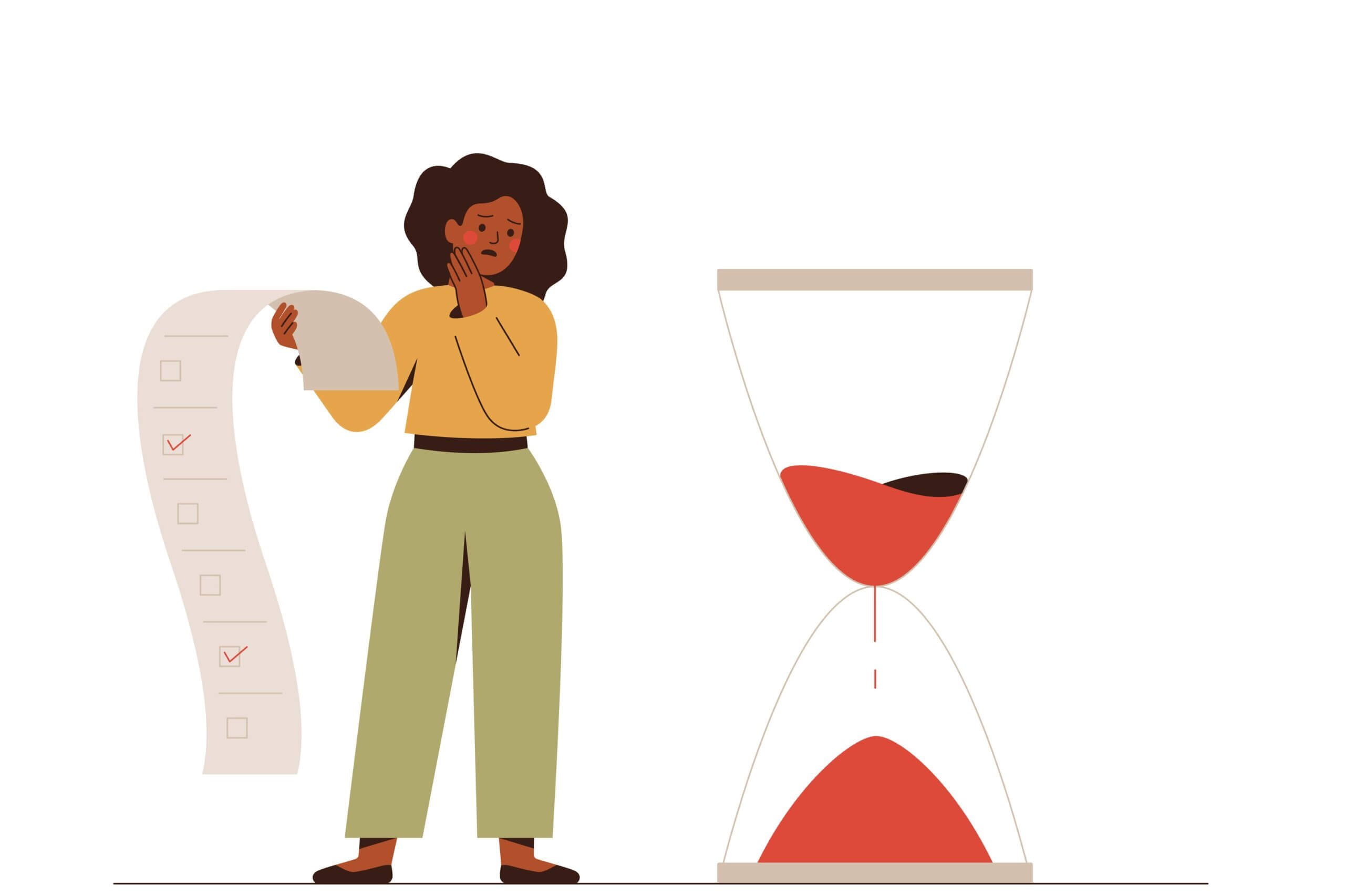4 Time Management Methods for Lawyers to Increase Productivity
Published on February 21, 2023 Lawyer Life Law Student Life

This article was based on topics found in “Time Management and Productivity Methods for Attorneys” by Anne-Marie Rábago
When it comes to productivity, how do you manage your time?
From running your firm to meeting with clients, managing your time successfully may seem impossible. But did you know poor time management can have a negative impact on your health?
Burnout, stress, anxiety, and depression can manifest as a result of poor time management. If you’re experiencing one or more of these issues, it’s time to take a serious look at how you manage your time.
One of the best (and easiest) ways to boost your productivity is by implementing a time management method in your daily routine.
Now, we know what you’re thinking. Taking time away from your already busy day to implement a time management system may seem counterintuitive.
But it’s not as daunting as it may initially appear! You can save two hours by simply spending ten minutes planning your day.
A recent survey of 500 professionals across various industries found that only 18% of people use a dedicated time management method in their professional lives.
The other 82% don’t use a system at all. They simply deal with work as it comes up instead of organizing a proper plan to be as productive as possible.
If you relate to the 82%, here’s how you can focus and make the most of your time.
Four Tried-and-True Time Management Methods for Lawyers
Eat That Frog!
Eat a live frog first thing in the morning, and nothing worse will happen to you the rest of the day.
—Attributed to American humorist Mark Twain

Putting this in the context of work means completing the biggest, most daunting task first thing in the morning when you have the most energy. This way, you won’t have to fight against a lack of energy and motivation to complete crucial tasks at the end of the day.
Even if it takes four hours, once you’re done, everything else will be easy as pie, which tastes much better than a live frog.
Canadian motivational public speaker Brian Tracy took this idea and built an entire time management system around it. Here’s how it works:
- Start your day working on the biggest, most important task on your to-do list.
- Keep working until you complete it, and only then move to the next task.
- That’s it!
“Eat That Frog” may not seem as structured or complex as other time management systems, but that’s the beauty of it. It’s a great choice if you’re just starting to dip your feet into the world of time management systems.
The 1-3-5 Rule
When it comes to time management methods, simplicity is often key to success. Take the 1-3-5 Rule, for example. This method is structured and simple to implement because it breaks down your daily tasks in terms of size.
Start by breaking down your daily tasks into the following categories:
- 1 big thing
- 3 medium things
- 5 small things
Complete the tasks in this order. You can end your day by marking off the tasks you completed and preparing your tasks for the next day. This final step can even be one of your five “small things.”
Due to its structure, the 1-3-5 Rule is easy to implement in even the busiest lives. It’s also a bit of an expansion on the “Eat That Frog” method, as both begin with one “big” thing, but the latter includes a more organized path to follow after eating your daily frog.
The Pomodoro Technique

This technique was developed in the 1980s by an Italian man named Francesco Cirillo. To minimize distractions, Cirillo grabbed a tomato timer from his kitchen and turned it to the maximum time, which was twenty-five minutes.
He let it run, sat down, and committed himself to twenty-five minutes of focused, undistracted work. Having a time limit proved to be an excellent way to get work done.
Here's how to try the “Pomodoro Technique”:
- Set a timer for twenty-five minutes. During those twenty-five minutes, commit yourself to work straight through without getting distracted or jumping to other tasks.
- Once the twenty-five minutes are up, take a five-minute break. This opportunity to rest gives your brain the chance to quickly recover. Your brain will work subconsciously, so when you return to your work, you’ll be ready to solve even more problems!
- After four sets of twenty-five-minute focused work/five-minute breaks, take a fifteen- to thirty-minute break.
The “Pomodoro Technique” is a great choice for people who often get pulled away from work. Try turning off your notifications or set your phone to “Do Not Disturb” during your twenty-five minutes.
Difficult or impossible for a lawyer, right? Not necessarily. It will encourage you to think of communicating and responding to clients differently. You have to keep your clients reasonably informed, the keyword being reasonably.
Define times when your clients can expect you to communicate with them. Setting boundaries for communication expectations is both healthy and necessary.
As long as you keep your clients informed and your responses are timely, no issues should crop up.
Getting Things Done

This aptly named time management method is about, well, getting things done! But it goes much deeper than that.
Formulated by David Allen in the early 2000s, “Getting Things Done,” also known as the “GTD Tactic,” is equally effective and applicable.
To start, simply write down every task, project, and idea on your mind. Make sure to include things from both your professional and personal life.
The point is to get everything you’re storing in your brain out on paper. As Allen says, “your head is not intended to serve as a filing cabinet.”
It may seem like a lot, but the “GTD Tactic” helps by turning tasks into things you can see. By unloading these tasks from your head to paper, they become tangible and live in a reliable place you can go to see deadlines, commitments, and ideas.
Once you complete your brain dump and your tasks are laid out in front of you, it’s time to implement “The 4 Ds.” Simply look at each task and decide if you can:
- Do it
- Delegate it
- Defer it
- Drop it
“The 4 Ds” are a crucial part of GTD because they help you to decide what to do with each task. Can you automate a task, or can you offload it to a paralegal, colleague, or coworker?
Take some time to categorize your tasks accordingly. Then you can focus your time and energy on working on each remaining “Do it” task until it’s done.
This will save your mental energy, and you won’t have to spread yourself thin by working on too many tasks or letting one task linger over the week or month.
Choose a Time Management Method That Works Best for You
Time management is just one of the many positive habits lawyers should implement in their professional and personal lives.
By controlling how you use your time, you’ll be able to get more work done on a more consistent basis, all while overcoming burnout, stress, and other common obstacles.
Here’s our challenge for you: try out the methods we listed above and see which one feels right. You can even try combining two or three methods into one that works for you!
Take charge of how you manage your time, and you’ll put yourself back in the driver’s seat.
For a deeper dive into productivity and time management methods for lawyers, register for the “Time Management and Productivity Methods for Attorneys” Webcast replay from TexasBarCLE.
TOJI Director Joshua Weaver Talks Time Management [Watch]

Otto Nicli
Otto Nicli is part of the State Bar's Web team and serves as the blog writer for the Texas Bar Practice website. He also plays a part in marketing and video production. In his free time, he enjoys watching Top Chef with his wife, collecting records, reading, and going to shows.